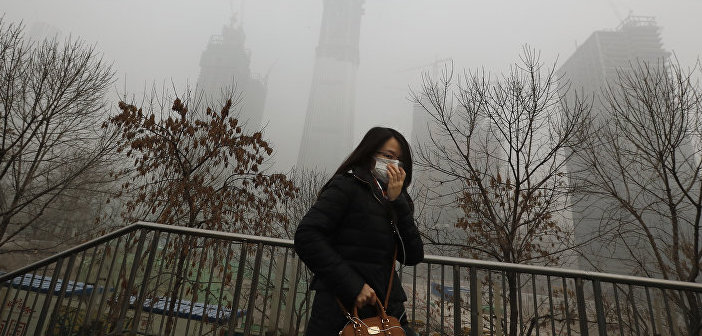A new study published on Monday in the journal, Nature Sustainability, detailed the alarming links between air pollution and “silent” miscarriages, or those pregnancies that are lost without showing any outward physical symptoms commonly associated with a miscarriage.
The research, conducted by scientists at five Chinese universities and funded in part by grants from three Chinese government-backed research foundations, used the clinical records of more than 250,000 pregnant women in Beijing between 2009 and 2017. Of the population, 17,497, or 6.8 percent, experienced a silent miscarriage in the first trimester.
Over the course of the eight-year study, researchers gauged the participants’ exposure to air pollution in their neighborhoods and at work, specifically measuring the threat of four common pollutants: PM2.5, sulfur dioxide, ozone, and carbon monoxide, using a series of air monitoring systems around the city. Even when the participants’ varied ages and occupations were taken into account, the researchers still concluded that, “in all groups, maternal exposure to each air pollutant was associated with the risk.”
While this study sheds much-needed light on an issue that has long plagued Beijing’s expectant mothers, the very nature of the study’s methodologies provided a limited data set that isn’t as comprehensive as the researchers would have liked. For instance, Zhang Liqiang, a researcher at Beijing Normal University and lead author of the study, acknowledged the fact that of the four pollutants monitored, some may have played a larger part in the causation than others. What’s more, there may have been other contributing factors such as indoor air pollution from stoves, construction materials, and tobacco smoke.
Nevertheless, Tom Clemens, a lecturer at the University of Edinburgh who was familiar with the study, but did not participate in it, told the New York Times that “There has been a lot of evidence suggesting a link between air pollution and pregnancy outcomes in general, particularly the risk of a premature birth and a low weight baby.” However he goes on to point out that, “This is one of the first studies to link particle pollution to this particular outcome of pregnancy so in that sense it’s very important.”
And indeed it is. According to a report published last month by the Switzerland-based group IQAir AirVisual, Beijing is on track to drop out of the world’s 200 most polluted cities this year. While that is great news for the capital, it’s bad news for the roughly 200 cities that sit above it on that list. Nevertheless, with lessons learned in Beijing, and solutions to curb pollution being developed here, the overall benefits of the study will be felt by expectant parents worldwide.
Aside from the trauma that parents are subjected to when they suffer a miscarriage, the authors of the study also linked their research to another issue facing China; a glaring age disparity in its population. According to Zhang, “China is an aging society and our study provides an additional motivation for the country to reduce ambient air pollution for the sake of enhancing the birth rate.”
Photos: Sputnik News




